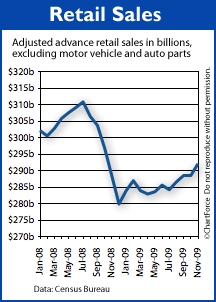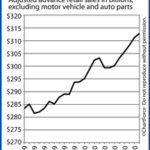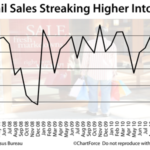
Today’s Retail Sales Predict Rates & Affordability for Next Year
Versus October, November’s ex-auto sales were up by more than 1 percent. Analysts expected the increase, but not an increase of this magnitude.
“Ex-auto” means that motor vehicles and parts are excluded from the data.
Home values are increasing in many parts of the country and household net worths are rising, too. Therefore, we can infer from the Retail Sales report that U.S. consumers are starting to feel better about their individual finances, and about the economy overall.
To homebuyers and rate shoppers, strong Retail Sales data may foreshadow higher rates for mortgages ahead. This is because sales data is a by-product of consumer spending and consumer spending accounts for more than two-thirds of the economy.
Waiting to Buy a Home May Be Costly
As spending increases, the economy tends to expand, drawing investment dollars into stock markets and away from bond markets — including mortgage-backed bonds, the basis for conforming mortgage rates.
Less bond demand leads to higher rates and, therefore, lower levels of home affordability.
Despite the Holiday Season momentum, however, 2009 will likely mark just the second time that Retail Sales data fell year-over-year since the government started tracking it 40 years ago. The other year was 2008.
But, if November’s Retail Sales is a reliable indicator of consumer sentiment overall, we should expect 2010 to rebound strongly. And when it does, mortgage rates should suffer.
The housing market is recovering, mortgage rates are still near all-time lows, and the government is offering an $8,000 tax credit to qualified buyers through April 30, 2010. If you plan to buy a home next spring, you may want to consider moving up your timeframe. Waiting may be costly.









